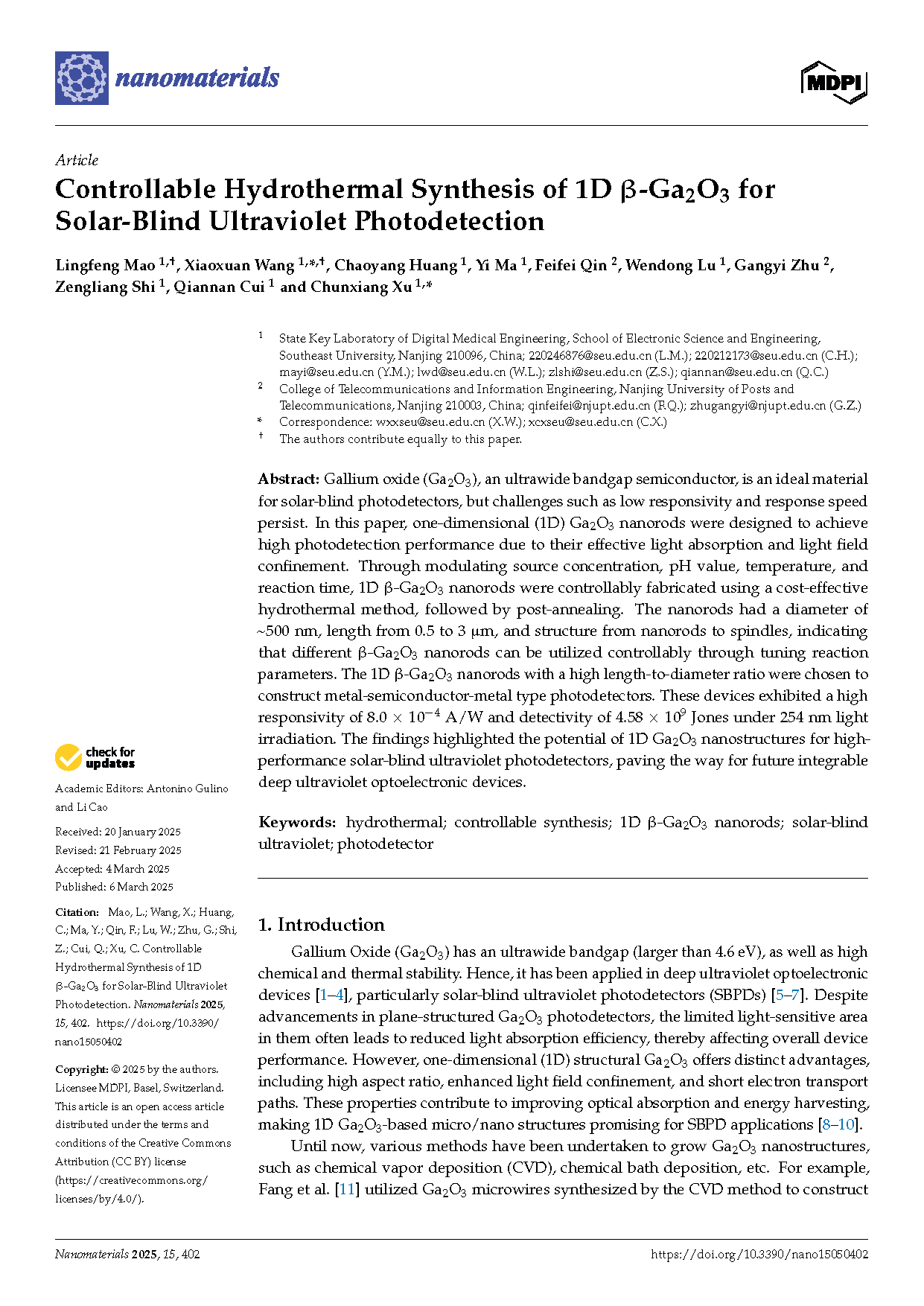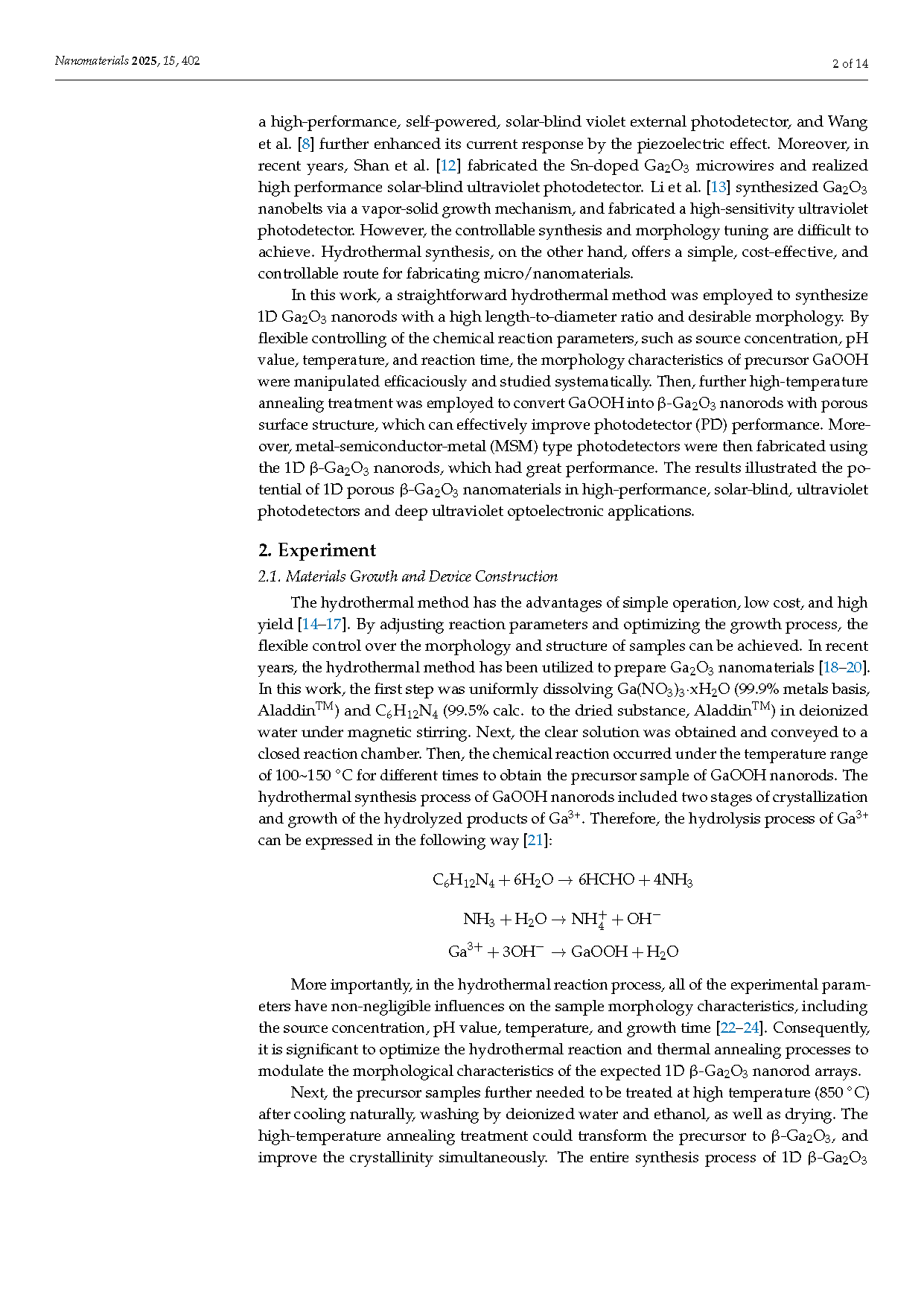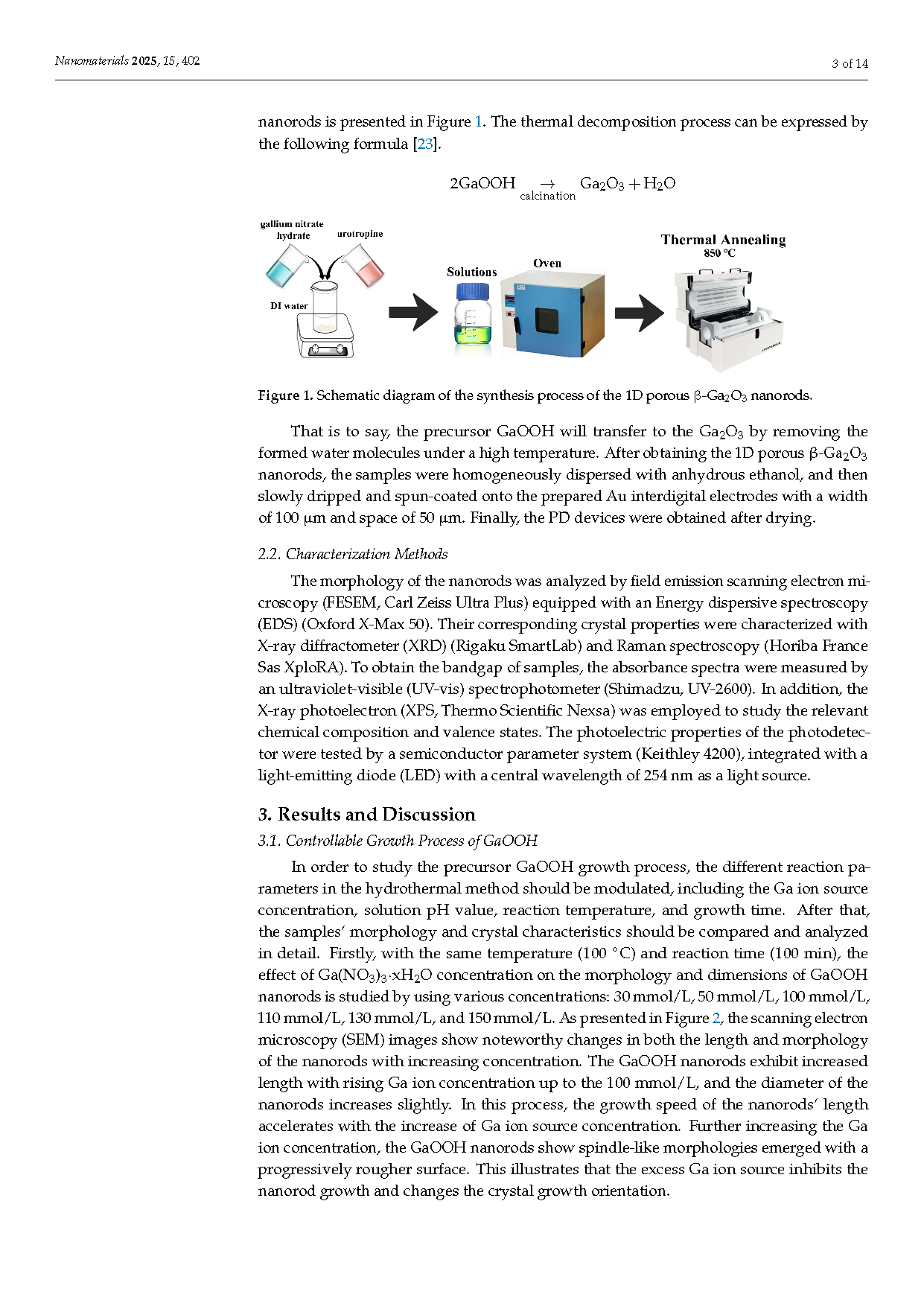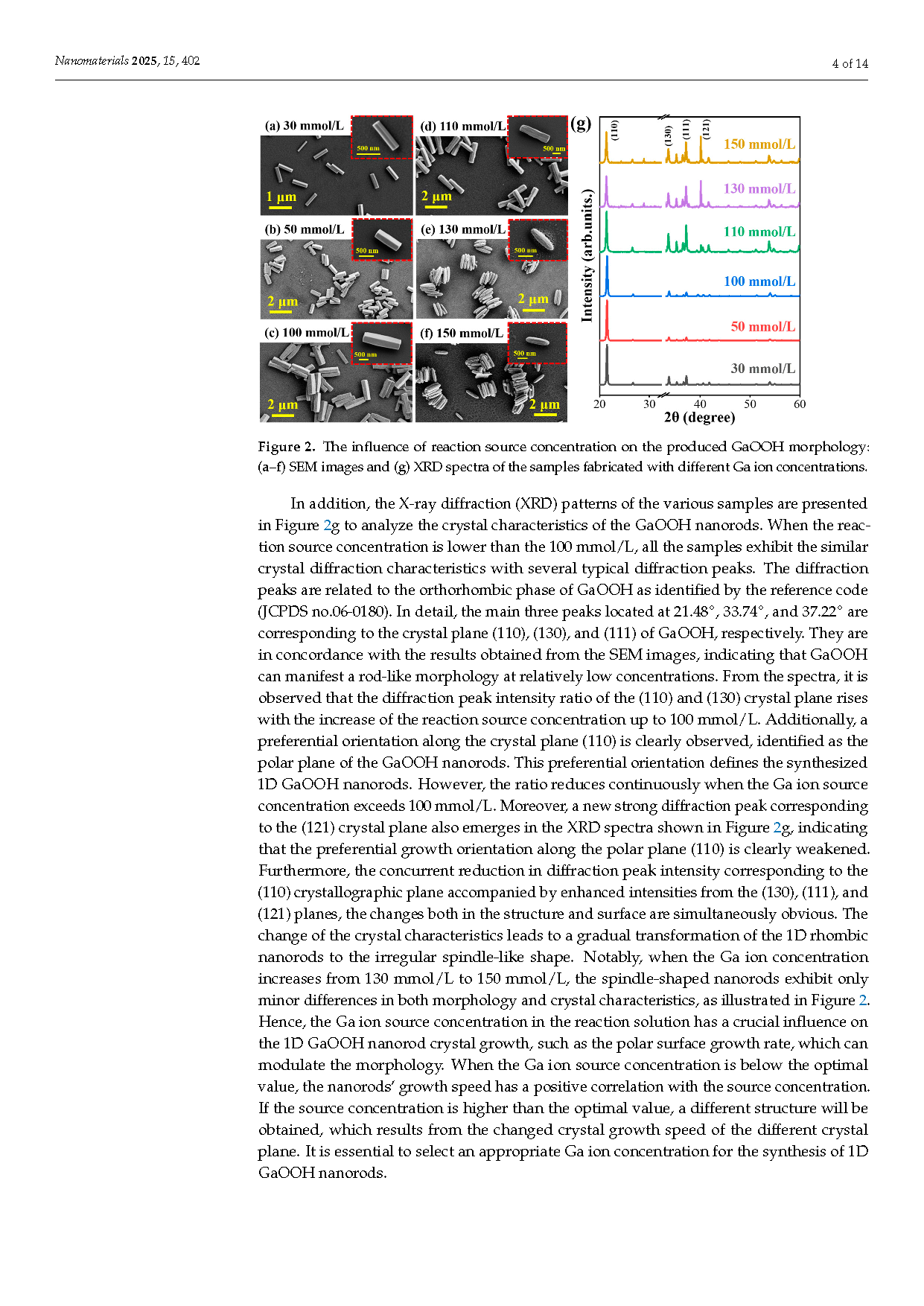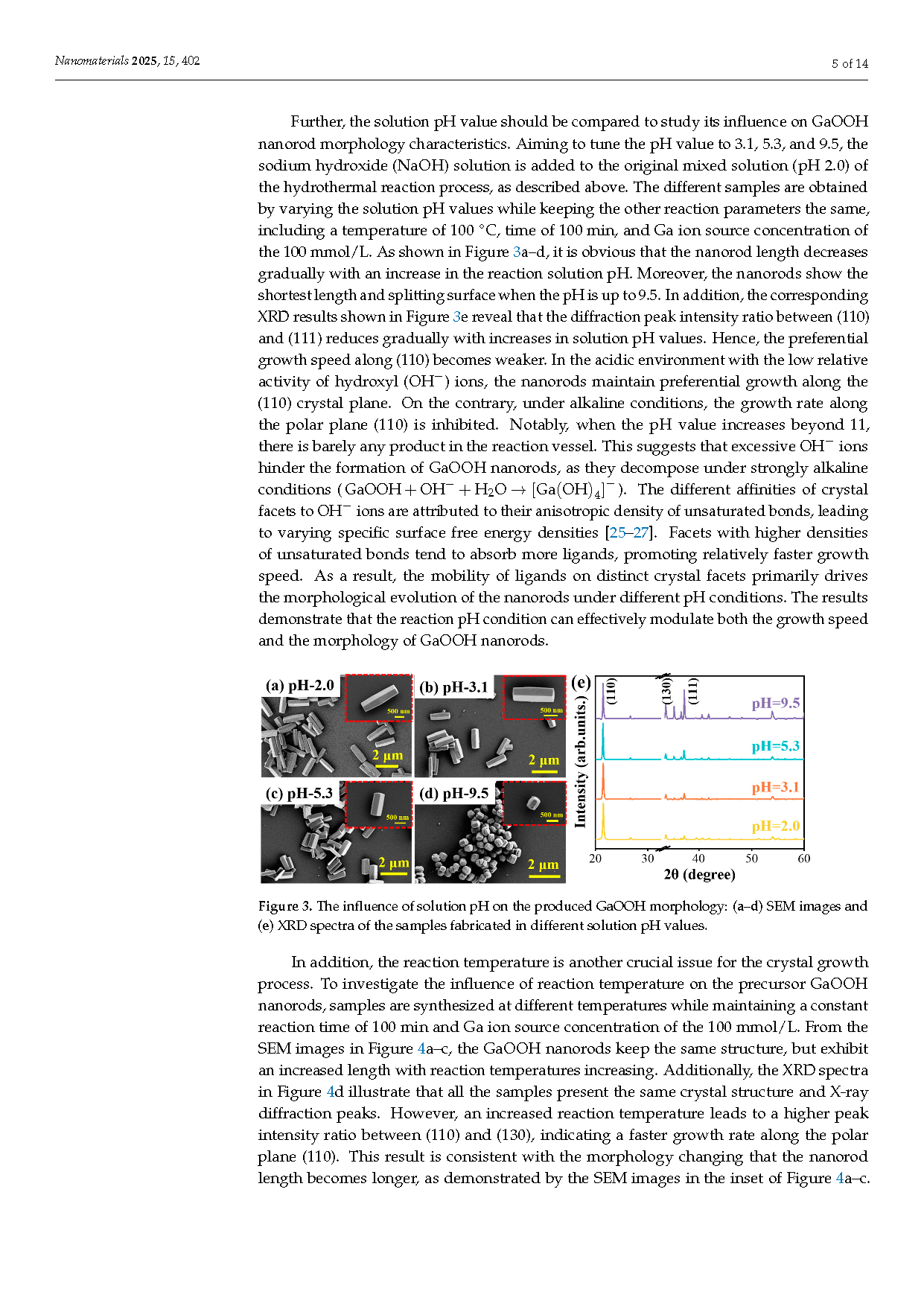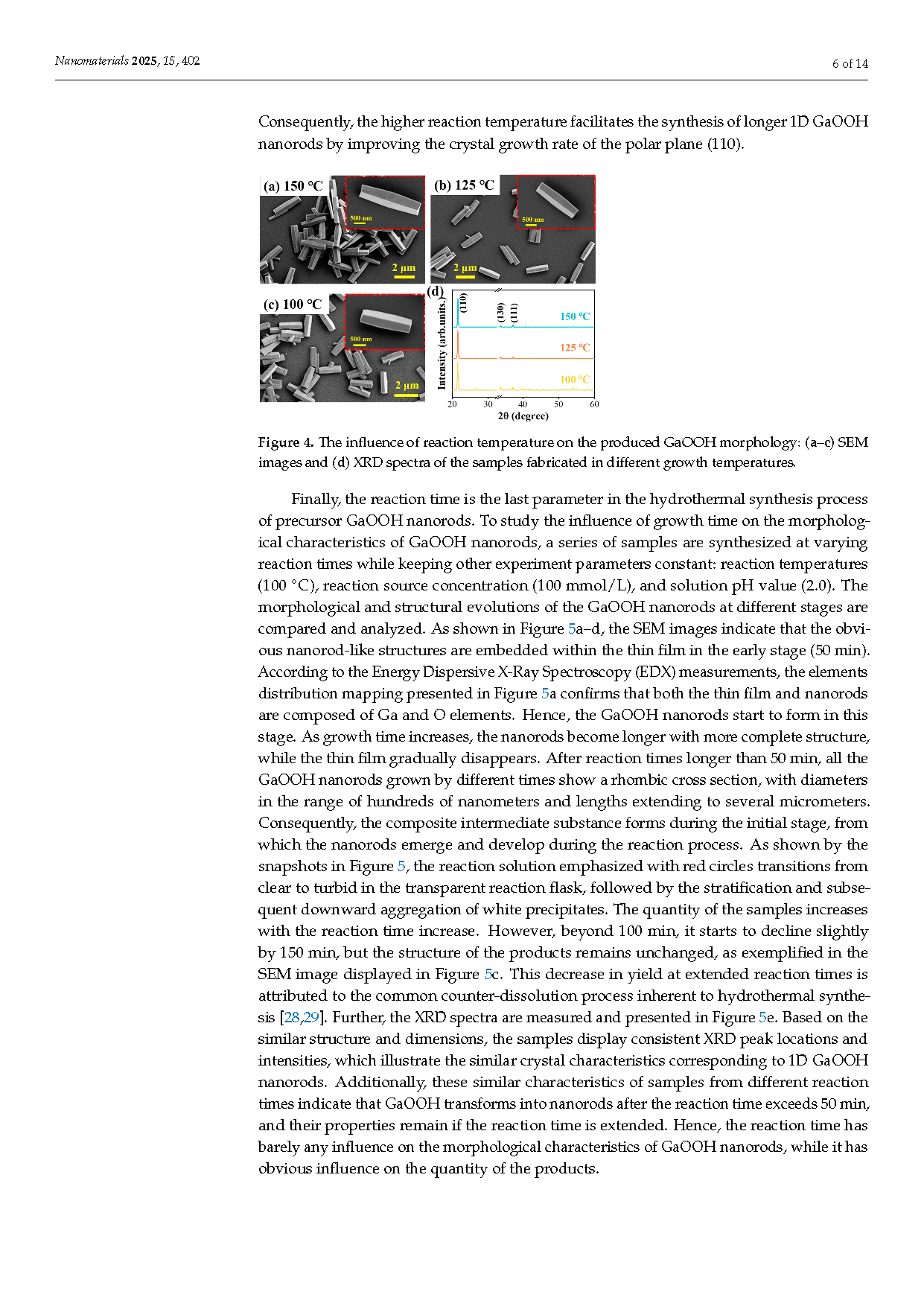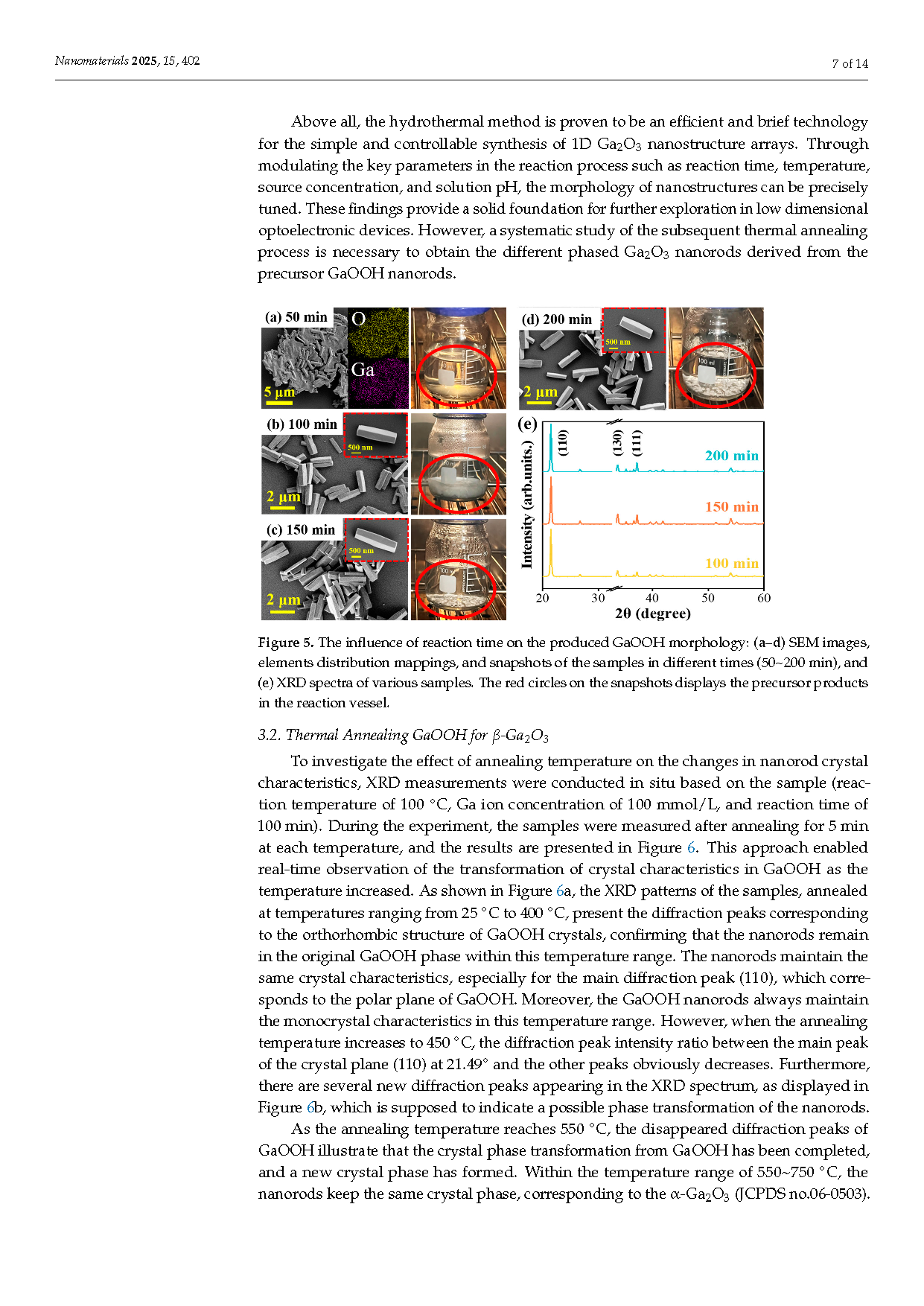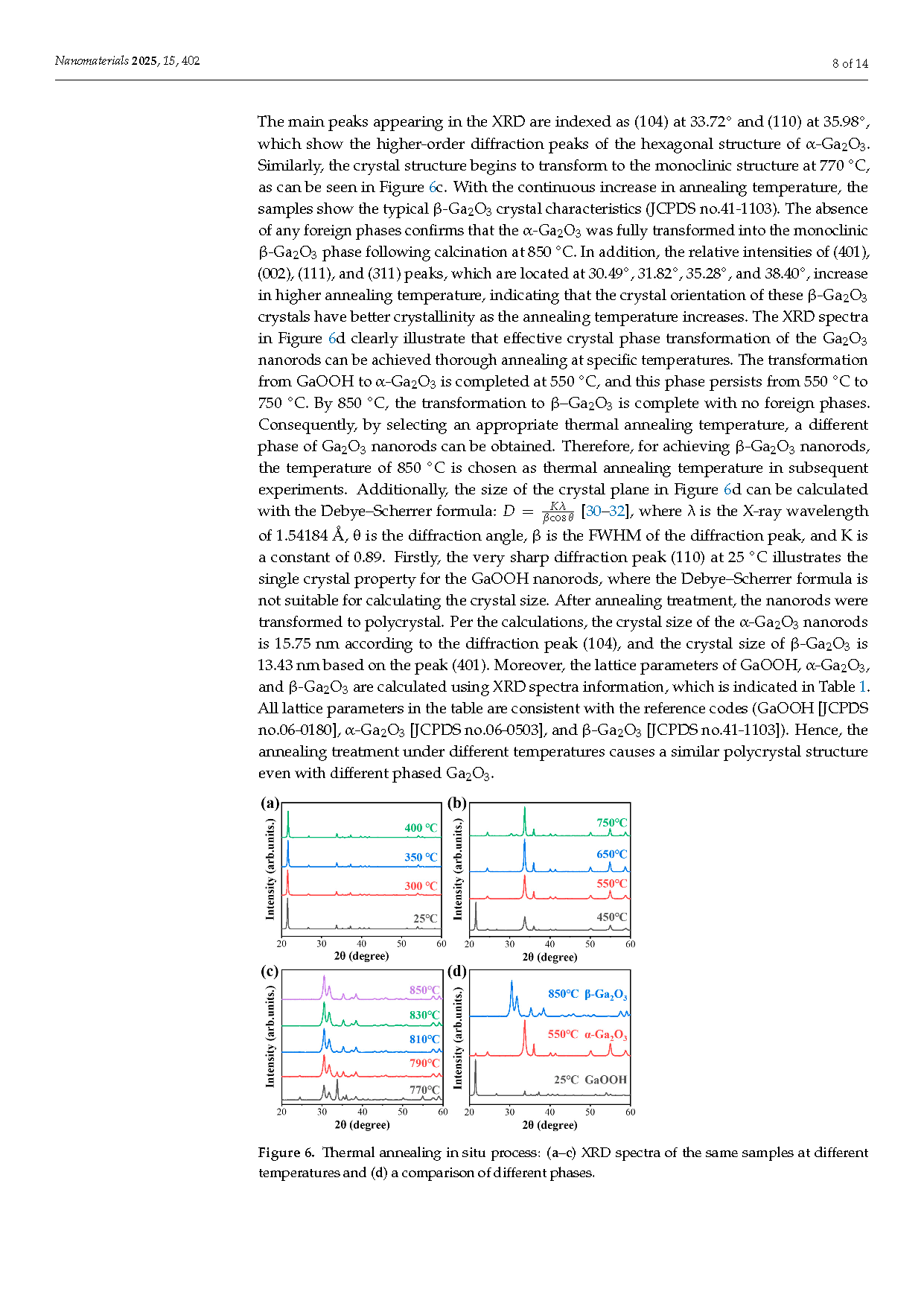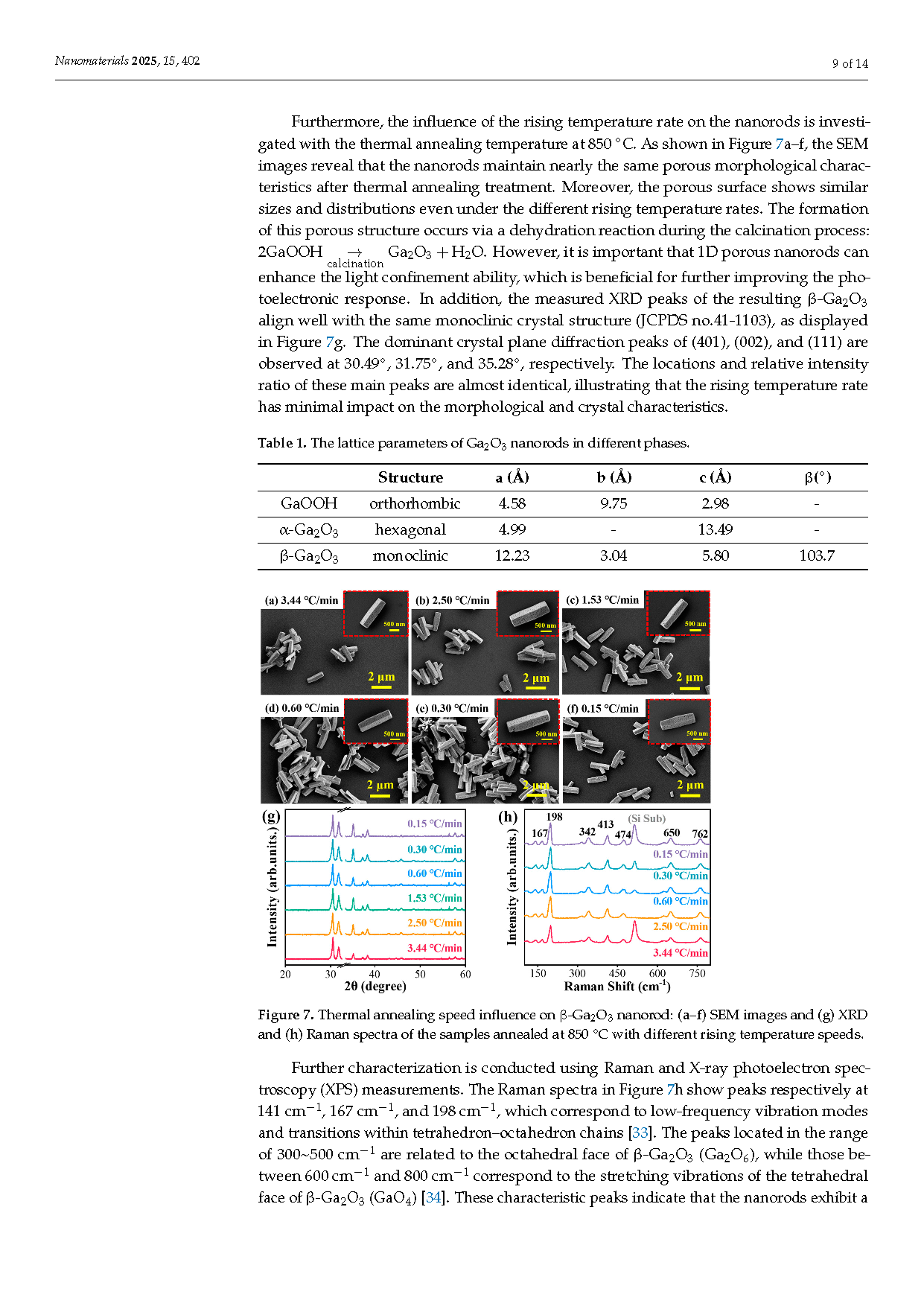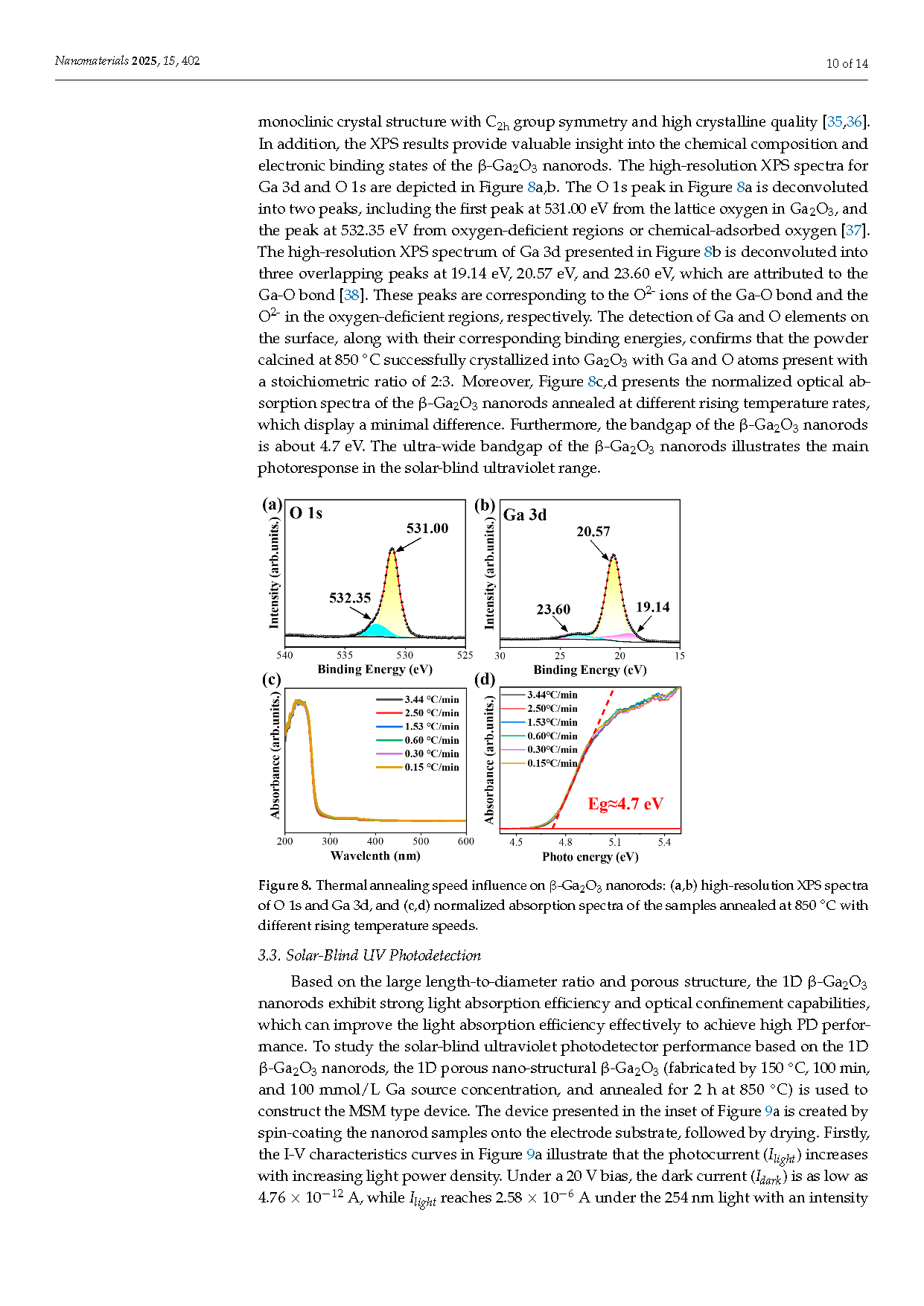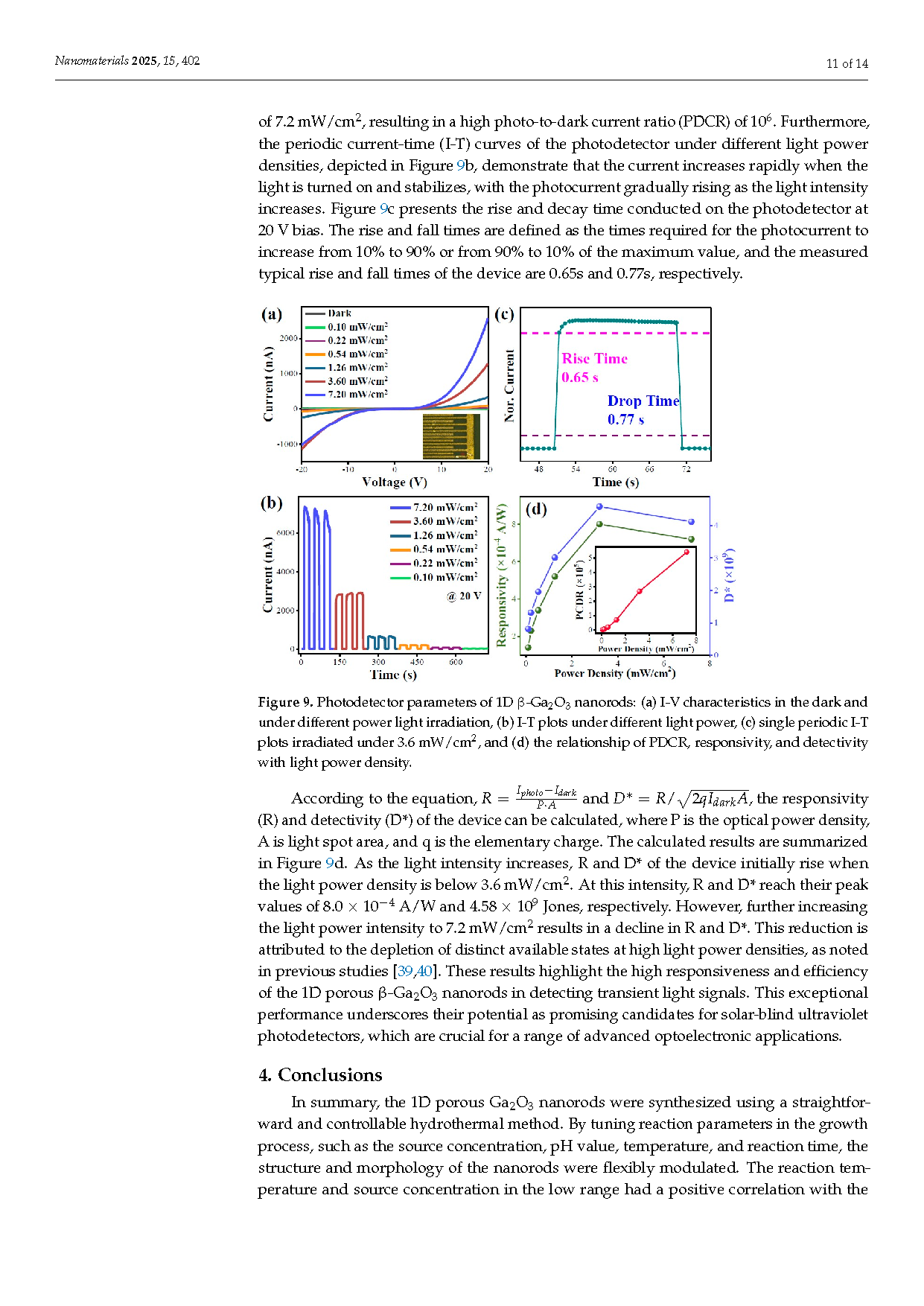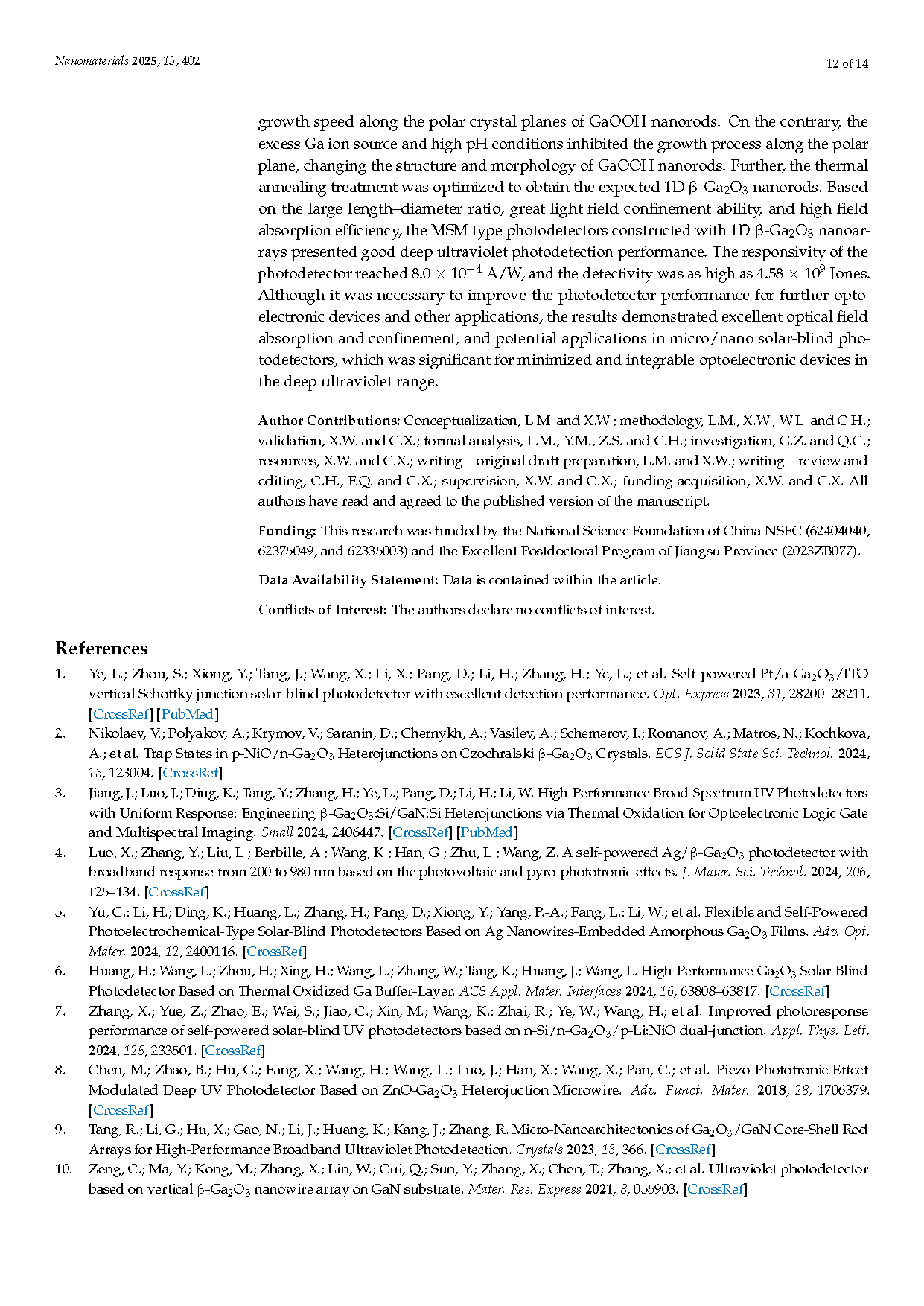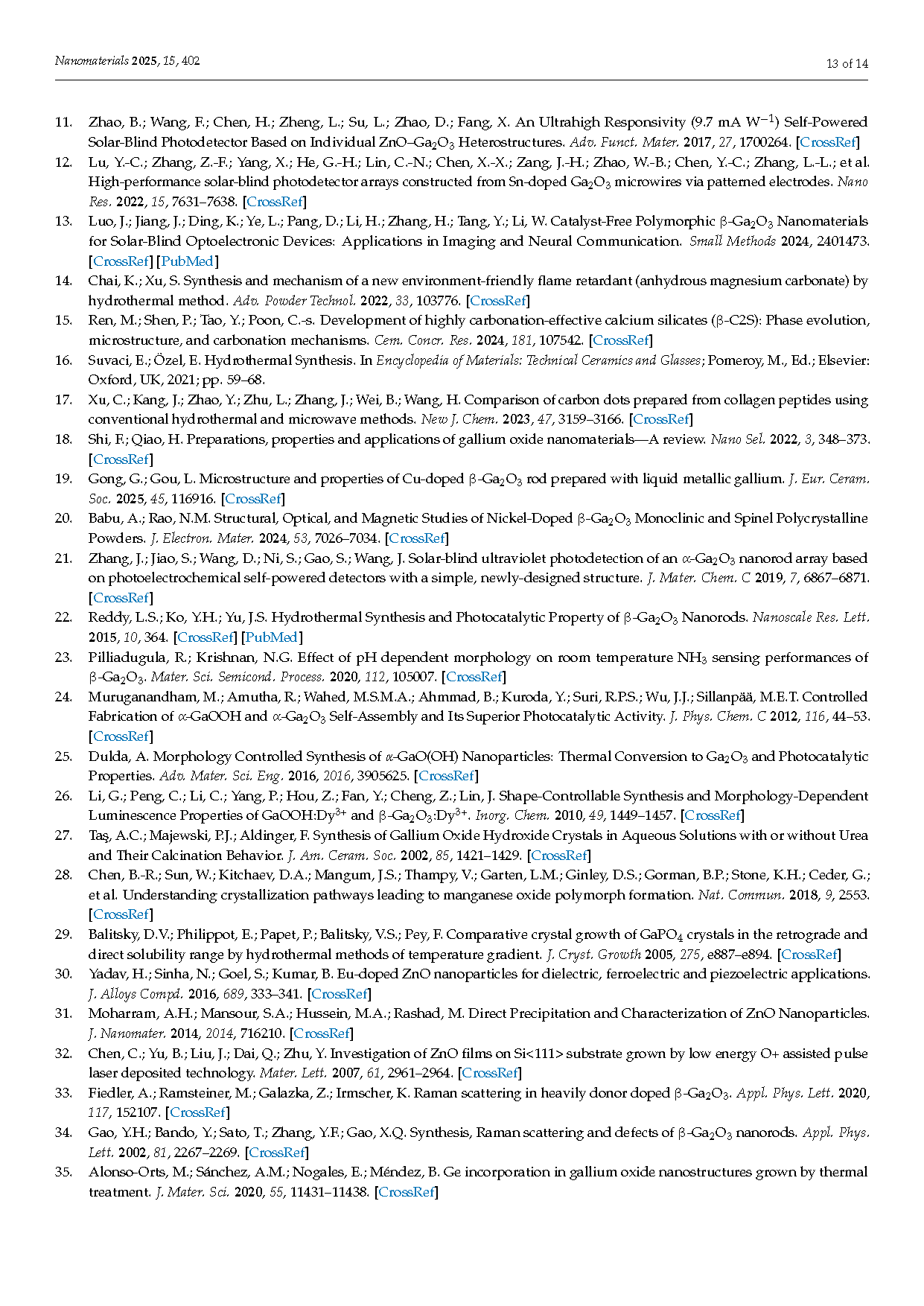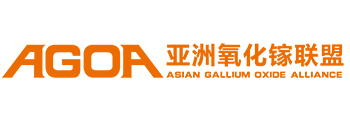

【Domestic Papers】Southeast University --- Controllable Hydrothermal Synthesis of 1D β-Ga₂O₃ for Solar-Blind Ultraviolet Photodetection
日期:2025-04-08阅读:544
Researchers from the Southeast University have published a dissertation titled "Controllable Hydrothermal Synthesis of 1D β-Ga2O3 for Solar-Blind Ultraviolet Photodetection" in Nanomaterials.
Abstract
Gallium oxide (Ga2O3), an ultrawide bandgap semiconductor, is an ideal material for solar-blind photodetectors, but challenges such as low responsivity and response speed persist. In this paper, one-dimensional (1D) Ga2O3 nanorods were designed to achieve high photodetection performance due to their effective light absorption and light field confinement. Through modulating source concentration, pH value, temperature, and reaction time, 1D β-Ga2O3 nanorods were controllably fabricated using a cost-effective hydrothermal method, followed by post-annealing. The nanorods had a diameter of ~500 nm, length from 0.5 to 3 μm, and structure from nanorods to spindles, indicating that different β-Ga2O3 nanorods can be utilized controllably through tuning reaction parameters. The 1D β-Ga2O3 nanorods with a high length-to-diameter ratio were chosen to construct metal-semiconductor-metal type photodetectors. These devices exhibited a high responsivity of 8.0 × 10−4 A/W and detectivity of 4.58 × 109 Jones under 254 nm light irradiation. The findings highlighted the potential of 1D Ga2O3 nanostructures for high-performance solar-blind ultraviolet photodetectors, paving the way for future integrable deep ultraviolet optoelectronic devices.

Figure 1. Schematic diagram of the synthesis process of the 1D porous β-Ga2O3 nanorods.
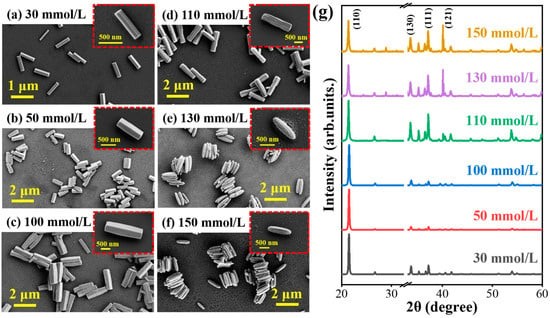
Figure 2. The influence of reaction source concentration on the produced GaOOH morphology: (a–f) SEM images and (g) XRD spectra of the samples fabricated with different Ga ion concentrations.
DOI:
doi.org/10.3390/nano15050402
